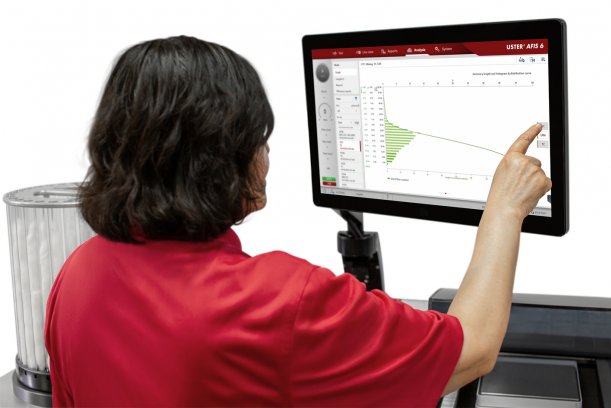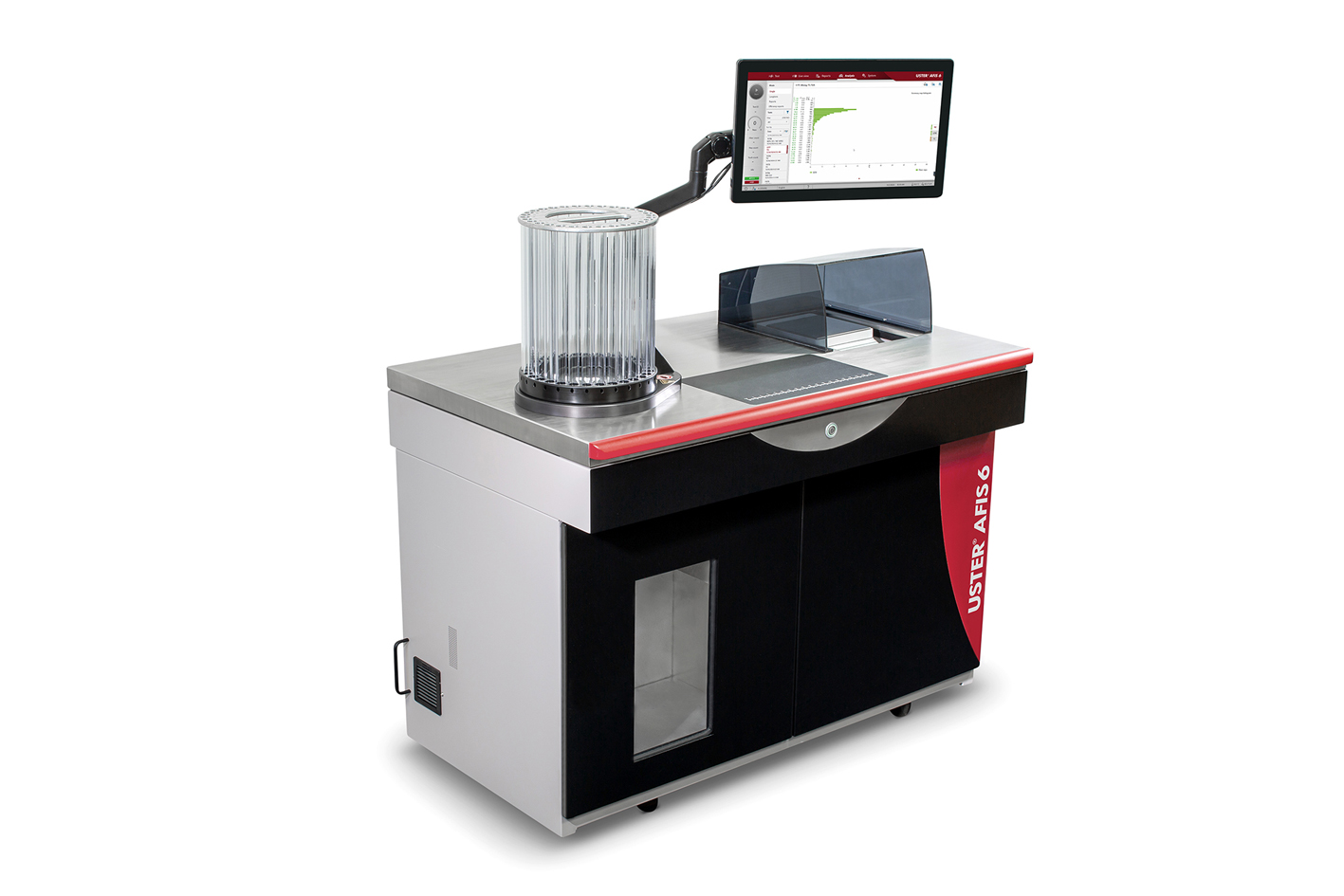
Uster’s expanded services underlined in Singapore
Comprehensive testing at each stage of preparation, from bale to roving.

19th May 2025
Innovation in Textiles
|
Uster, Switzerland
Fibre quality measurement in spinning preparation is crucial for optimising waste and meeting yarn quality specifications. The brand-new Uster AFIS 6 – the next-generation laboratory instrument from Uster Technologies – uniquely tests man-made fibre properties in addition to cotton, providing critical data to optimise fibre process control.
Spinners strive to preserve the quality of valuable incoming fibre throughout the manufacturing process. The Uster AFIS 6 achieves this by testing the material at each stage of preparation, from bale to roving. In its latest version, AFIS can now measure 100% synthetic fibres and fibre blends commonly used in short-staple spinning in the same unit as cotton.
Several different fibre characteristics affect quality and performance through pre-spinning operations – opening, cleaning, carding, combing, roving – so testing needs to take account of the impact of each. AFIS achieves this by measuring the various parameters for the length, fineness, maturity, neps, seed coat neps, trash and dust in a particular test specimen of fibre.
This intensive monitoring is the only way to detect fibre quality issues before they get into the yarn and can lead to quality claims from customers.
AFIS 6 also makes things easier for the spinner, applying the same intuitive user interface as the famous Uster Tester 6 and other Uster yarn testing instruments, featuring 11 languages. The improved reporting package simplifies data analysis.
What spinners need to know
Neps in yarn can be seriously disturbing if they show up in finished fabrics and garments. Uster AFIS 6 makes the important distinction between fibre neps and seed coat neps which are more difficult to remove. In addition to the number of neps, the size of the neps is measured. With the critical neps size report, spinners get an estimate of how many neps are in the yarn.
For the spinning process, it is also essential to know about fibre length and short fibre content. AFIS 6 measures the single fibre length, per number and per weight. Next to the length, the maturity and immature fibre count are measured.

An optional sensor also measures dust and trash particles, which can cause serious problems in subsequent fabric manufacturing processes. Knowing the number of trash and dust particles helps the spinner and results in less downtime in weaving, while knitting needles last longer,and cleaning efficiency in the open-end spin box is enhanced.
Synthetic fibres are growing in importance, so it’s essential to measure them. Short-staple yarns today include more and more cotton/synthetic blends and 100% synthetics. Cotton can be blended with fibres such as polyester, micro-polyester, viscose, modal, micro-modal, lyocell, micro-lyocell and acrylic.
The Uster AFIS 6 can measure the synthetic fibres most commonly used in short staple spinning and new test parameters have also been introduced, such as cut length and denier.
Quality and profitability
Carding and combing are the two fibre processes in the spinning mill which most influence yarn quality. The carding process is at the heart of every spinning mill and poor performance here cannot be recovered in subsequent processes.
The combing process reduces the short fibre content and is the last removal stage for neps, trash and dust. Only with Uster AFIS 6 measurements can spinners optimise both of these processes and save money.
Uster AFIS 6 can be connected to Quality Expert, hosted in the Uster Tester 6. Full control from fibre to yarn in a single inline system illustrates the entire mill operation, with key quality parameters in the right format at the right time. Mill analysis with meaningful quality comparisons, integrated application knowledge and focused management reports is leveraged for even more informed decision-making.
Uster Statistics is already integrated within AFIS 6, making global benchmark comparisons quick and easy. The new AFIS provides two Uster Statistics interactions – one for the whole process and one for each process step. Comparisons to Uster Statistics throughout the process show any unexpected spinning faults.

Business intelligence for the fibre, textiles and apparel industries: technologies, innovations, markets, investments, trade policy, sourcing, strategy...
Find out more